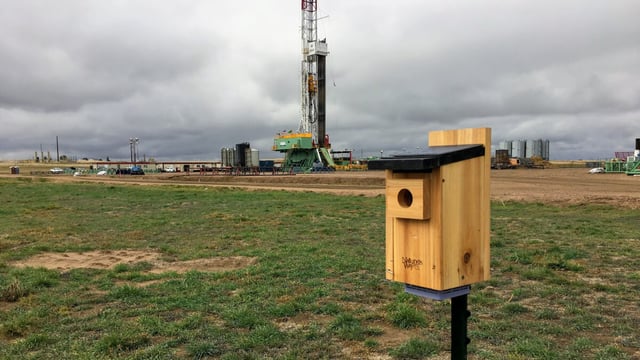Many enterprises are already using the Internet of Things (IoT) to solve a variety of problems and improve their organization’s efficiency, but unless you are already well-versed in IoT, it can be hard to know where to start. Your enterprise may be well-suited to IoT but just not know it yet.
If your organization is looking at IoT but isn’t sure where to begin, an application enablement platform (AEP) such as Losant may be just what you need. An application enablement platform is designed to provide your team with the building blocks they need to develop an IoT application quickly and easily, allowing your team to focus more on providing value for your customers. In fact, according to MachNation, developing an IoT solution in Losant saves your enterprise time and resources compared to Azure, or building a solution in house.
Let’s take a look at what the Losant AEP can provide your enterprise, and see how companies are already putting IoT to use!
Key Components of an AEP
Before diving into the value an AEP such as Losant’s platform can provide, it’s important to know the core components of an AEP. An AEP should include functionality or features that meet the following criteria:
- Usability: Is the AEP easy to use?
- Flexibility: Can the AEP adapt to changing business needs?
- Security: Is the AEP keeping your data secure?
- Functionality: Does the AEP do what you need it to?
- Portability: Can the AEP go where you need it to?
- Stability: Is the AEP available when you need it?
- Scalability: Can the AEP grow with your business?
When you evaluate AEPs, you should ensure that the AEP can meet these requirements.
Expand Your Value to Your Clients
By working with an AEP, your organization gets access to a variety of new features and functionality that you can pass on to your clients. These features come with a lower barrier to entry than developing them in-house, allowing you to get them to your clients fast.
For example, NimbeLink, a developer of cellular-based IoT solutions, wanted to expand its asset tracking solution to include visual representations of data and even maps of asset locations. They had software that reported the data, but visualizing the data in dashboards, maps, and graphs was a challenge. To address this, NimbeLink turned to the Losant AEP.
Why did NimbeLink turn to an AEP rather than build a solution in-house? Because an AEP such as Losant comes with the functionality they needed out of the box. Losant’s AEP is hardware agnostic, which means that NimbeLink could integrate its existing hardware into Losant, saving the costs of buying new equipment. NimbeLink integrated its data into Losant’s secure ecosystem. This high level of usability enabled NimbeLink’s team to quickly deploy dashboards, configure reports and secure clients’ information with user authentication, all quicker than if they had developed in-house.
Speaking about what drew him to the Losant AEP, NimbeLink Co-founder and CEO Kurt Larson said, “The other platforms didn’t have the tools required to build a user interface that could securely support many companies with multiple users. The front-end features, the developer view, and the way that you could create individual experiences were important to us.”
Save the Environment and Revenue
Equipment downtime is a part of running a business, a costly one. When equipment goes down, that can lead to lost sales and lost revenue. But, how can an enterprise know when equipment is about to break down? The solution is IoT data. IoT allows enterprises to track their equipment and be proactive when it comes to repairs, rather than reactive. And, in some cases, even save the environment.
Project Canary, based out of Colorado, has one goal: to reduce the unintended natural gas emissions into the earth’s atmosphere. Before working with Losant, the only means of tracking natural gas emissions was to physically inspect each producing site with an expensive, highly specialized infrared camera. This was effective during the inspection, but should a leak occur shortly afterward, it would go unnoticed.
Project Canary turned to an AEP because of the high degree of portability inherent in the system. By working with the Losant AEP, Project Canary was able to develop a real-time data monitoring solution that could report natural gas emission levels and, should a leak occur, raise an alert for quick maintenance.

Because the sites Project Canary could be in remote locations, they needed to be sure that whatever solution they implemented would be able to function anywhere. Losant’s AEP includes Edge Compute functionality, which is designed to work in areas where a steady internet connection cannot be guaranteed. Edge Compute allows data to be read and stored locally on a device, and when the internet connection is reestablished, report it. See what else IoT data can do for your enterprise by reading Losant’s “Unlocking the Value of IoT Data” guide.
Project Canary’s data prevented revenue loss from expensive gas leaks, and helped our environment to boot. The founder of Project Canary, David Armitage, had this to say about working with Losant, “Losant has been fabulous for rapidly digesting and visualizing IoT data. I am still discovering new ways to use it for large-scale deployments."
Put Your Environment to Work
Your environment is more than just a building where you conduct business. With an IoT AEP, you can turn your environment into a smart environment and put it to work for you and your clients. Doing so can create new value to your employees and clients by transforming their experience with your brand. An excellent example is the Cincinnati/Northern Kentucky International Airport (CVG).

CVG includes an indoor terminal train designed to move customers quickly from one end of the airport to the other, a large distance! However, this terminal is also a source of confusion for passengers. Did it go into the city? Was it worth waiting for the train or walking?
The CVG airport turned to Losant to help. By installing sensors in the tracks and trains, Losant’s AEP was able to not only track the trains, it also displayed a user-friendly dashboard with estimated walking time, real-time train location, and wait times. This made the trains’ intended usage more clear and the customers’ trip through the airport more pleasant.
However, CVG didn’t stop at just one solution and neither did the Losant AEP. A good AEP must be flexible to adjust as needs change and scalable to grow with your business. In addition to monitoring the train, CVG used Losant’s AEP to monitor their bathroom usage and cleanliness, and are currently exploring options to monitor parking. As their needs changed and evolved, Losant’s AEP was able to evolve with them, and will continue to do so in the future.
Stephen Saunders, Senior Manager of Technical Operations at CVG, said, “We have to get smarter with what we have. … and we’re trying to solve that with technology." The Losant AEP is flexible enough to work even in this environment, and scalable enough to grow with the airport.
AEPs Add Value
These examples are just the tip of the AEP iceberg—there is so much more you can do when you add an AEP to your organization. AEPs fit seamlessly into normal business operations, scale and grow as your business does, and include easy-to-use but powerful functionality that can be up and running fast.
Interested in adding IoT to your enterprise? Schedule a platform walkthrough with one of our solution architects and see just how much Losant’s AEP can do.

